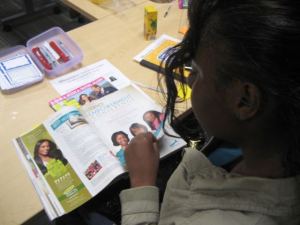What is Media Literacy?
According to the National Association of Media Literacy Education (NAMLE), media literacy is the ability to access, analyze, evaluate and create media. Anyone can do media literacy. It can happen in classrooms and in your every day life. Media literacy is a tool we use to help us navigate a media saturated world. It helps us be more informed consumers who advocate for change.
 At the heart of media literacy are key questions categorized by key concepts:
At the heart of media literacy are key questions categorized by key concepts:
1. Author: Who is the author? (and who produced or distributed this text?)
2. Audience: Who is the target audience?
3. Message: What is the message? How might different audiences interpret this message differently?
4. Technique: What techniques were used to get your attention?
5. Representation: What values or points of views are represented in this message?
6. Omission: What is left out?
7. Context: In what context was this message created?
8. Effects: Who is harmed and who benefits from this message?
Source: National Association of Media Literacy Education
The Media Literacy Project asserts that media literacy can help build the following skills. We agree.
 – Develop critical thinking skills
– Develop critical thinking skills
– Understand how media messages shape our culture and society
– Identify target marketing strategies
– Recognize what the media maker wants us to believe or do
– Name the techniques of persuasion used
– Recognize bias, spin, misinformation, and lies
– Discover the parts of the story that are not being told
– Evaluate media messages based on our own experiences, skills, beliefs, and values
– Create and distribute our own media messages
– Advocate for a changed media system
RECOMMENDED RESOURCES
The National Association of Media Literacy Education (NAMLE)
Pingback: Uncomfortable? You should be. | Feminist Messaging Project